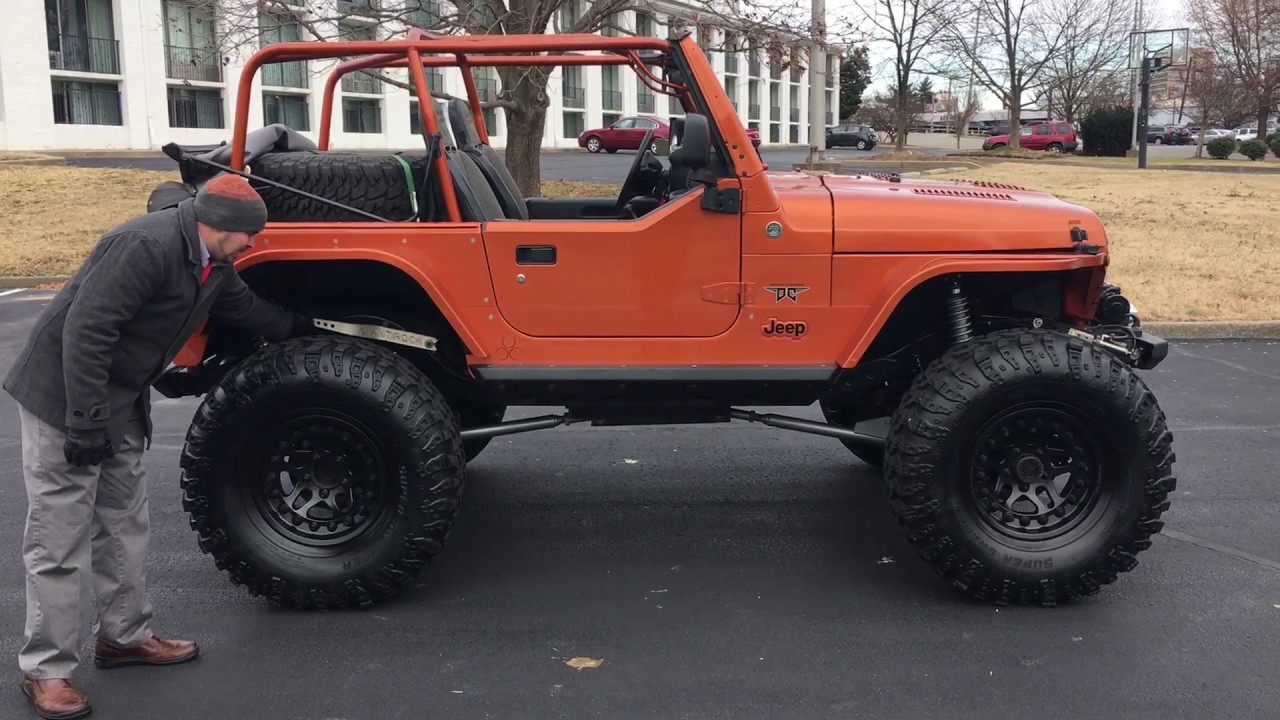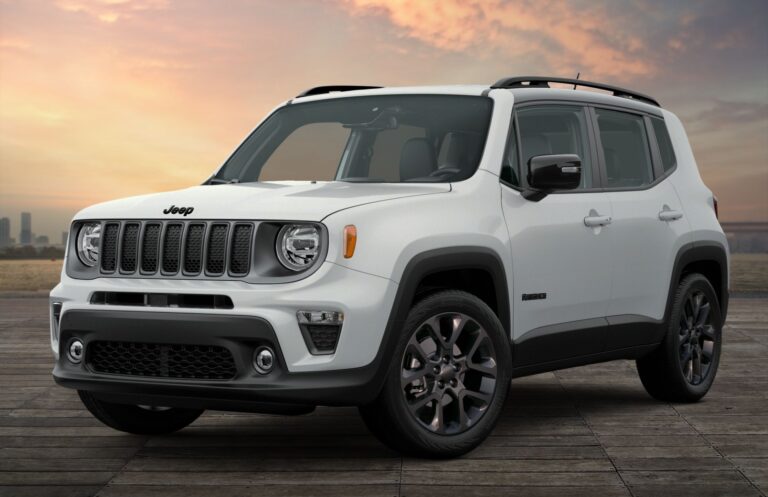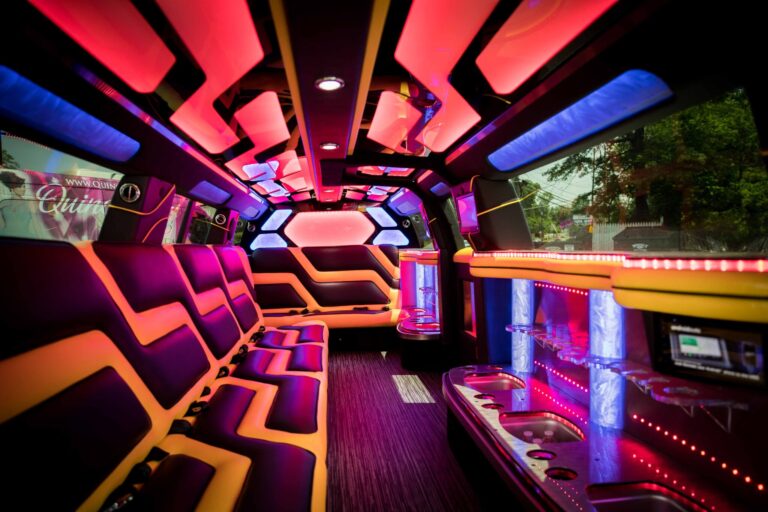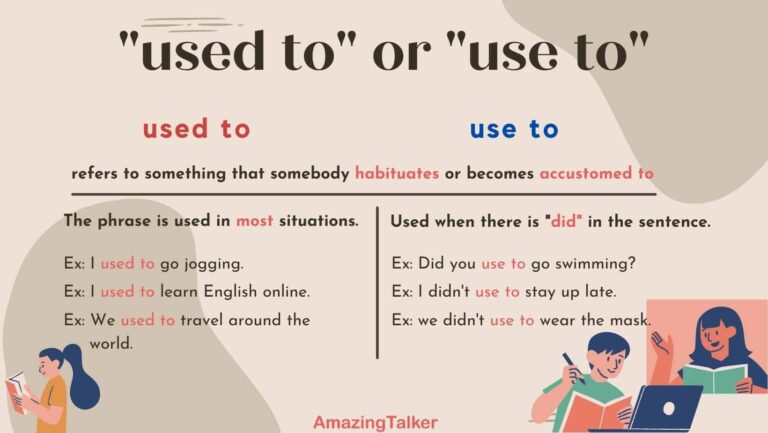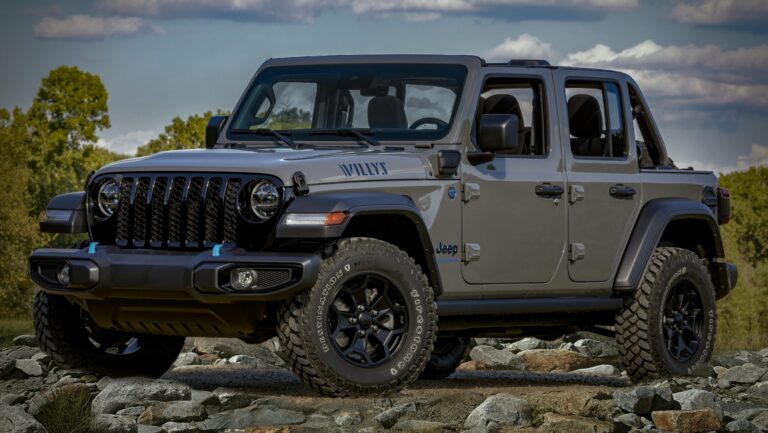Wrangler Jeep V8: Unleashing the Beast Within
Wrangler Jeep V8: Unleashing the Beast Within jeeps.truckstrend.com
The Jeep Wrangler, an undisputed icon of off-road prowess and adventurous spirit, has always been synonymous with rugged capability. For decades, its heart has typically been a reliable inline-six or a more modern V6 engine, providing ample power for trail conquering. However, for a select group of enthusiasts, "ample" simply isn’t enough. They crave something more, something that transforms the already capable Wrangler into an absolute powerhouse: a V8 engine. The concept of a Wrangler Jeep V8 represents the ultimate fusion of raw, unadulterated power with the legendary go-anywhere capability of the Wrangler, creating a vehicle that commands attention both on and off the pavement.
This article will delve deep into the world of the V8-powered Wrangler, exploring its allure, the different avenues to achieve this monumental upgrade, the performance benefits, practical considerations, and what it truly means to own such a formidable machine.
Wrangler Jeep V8: Unleashing the Beast Within
The Allure of the V8 Wrangler: Why Power Matters
The desire to shoehorn a V8 into a Wrangler isn’t just about bragging rights; it’s about fundamentally altering the vehicle’s character and capabilities. While the Pentastar V6 in modern Wranglers is a commendable engine, providing decent horsepower and torque, a V8 offers a different league of performance.
Imagine effortlessly crawling over boulders with a seemingly endless well of low-end torque, or rocketing through desert trails with a thunderous exhaust note echoing behind you. A V8 provides the kind of instantaneous throttle response and sustained power that makes challenging terrain feel less daunting and open roads exhilarating. For those who tow heavy loads, a V8 transforms the Wrangler from a reluctant hauler into a confident workhorse. Ultimately, for many, the V8 Wrangler embodies the purest form of the "Jeep dream": an unstoppable force with a soundtrack to match.
Factory-Built Beast: The Wrangler Rubicon 392
For years, a V8 Wrangler was exclusively the domain of aftermarket tuners and dedicated enthusiasts. However, in a move that sent ripples of excitement through the automotive world, Jeep officially answered the call with the introduction of the Wrangler Rubicon 392. This factory-built marvel brought legitimate V8 power to the masses, straight from the showroom floor.
The heart of the Rubicon 392 is a naturally aspirated 6.4-liter (392 cubic inch) HEMI V8 engine, producing a formidable 470 horsepower and 470 lb-ft of torque. Mated to a robust eight-speed automatic transmission, this powertrain propels the 392 from 0-60 mph in a blistering 4.5 seconds – a truly astounding figure for a vehicle designed primarily for off-road adventures.
But the 392 isn’t just about straight-line speed. Jeep engineered the entire vehicle to handle this significant power boost. It features:
- Heavy-duty wide track Dana 44 axles with Tru-Lok electronic locking differentials.
- Upgraded frame rails for enhanced rigidity.
- Performance Fox shock absorbers with a 2-inch factory lift.
- Reinforced engine mounts and transmission crossmember.
- Upgraded brakes to match the increased performance.
- A unique dual-mode exhaust system that allows the driver to switch between a quieter mode and a more aggressive, throatier rumble.
- Hydro-Guide™ Air Intake System designed to allow the engine to function even when water splashes over the hood, enabling a water fording capability of up to 32.5 inches.

The Rubicon 392 offers the undeniable benefit of a factory warranty, seamless integration of all components, and the peace of mind that comes with professional engineering. It’s the ultimate turn-key solution for those seeking a V8 Wrangler without venturing into the complexities of an engine swap.
The Aftermarket V8 Swap: A World of Customization
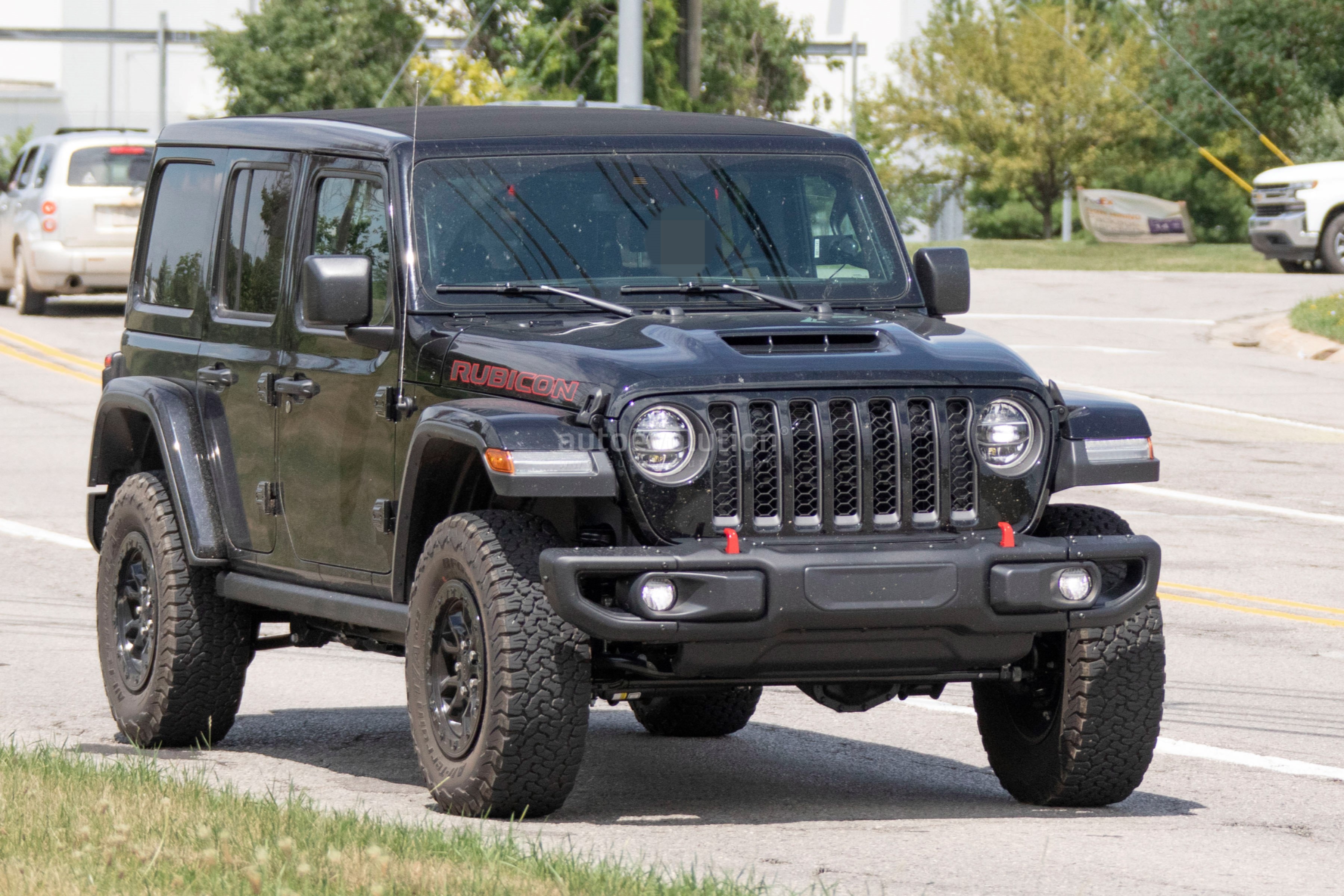
Before the 392, and still very much a vibrant part of the V8 Wrangler landscape, is the aftermarket engine swap. This route offers unparalleled customization and the ability to choose specific V8 engines to suit individual preferences and budgets.
Popular Engine Choices for Swaps:
- GM LS Series (LS1, LS3, LS7, LSX): Arguably the most popular choice due to their compact size, abundant aftermarket support, reliability, and excellent power-to-weight ratio. They are relatively affordable and can be found in various configurations.
- Chrysler HEMI (5.7L, 6.1L, 6.4L, Hellcat): A natural fit for a Jeep, keeping it "in the family." HEMIs offer fantastic torque and a classic Mopar rumble. Newer generations like the Hellcat provide extreme power levels.
- Ford Coyote (5.0L): A strong contender, especially for those loyal to the Blue Oval. The Coyote is a modern, DOHC engine known for its high revving nature and impressive horsepower.
Challenges and Considerations of a V8 Swap:
An engine swap is a complex undertaking that goes far beyond simply dropping a new engine into the bay. It requires meticulous planning, significant investment, and expert execution. Key areas of concern include:
- Engine & Transmission Mounting: Custom mounts are often required to properly seat the new powertrain.
- Wiring & Electronics Integration: This is arguably the most complex aspect. The new engine’s ECU needs to communicate with the Jeep’s body control modules, gauges, and various sensors. This often involves custom wiring harnesses and programming.
- Cooling System: A V8 generates significantly more heat, necessitating larger radiators, upgraded fans, and potentially auxiliary coolers.
- Fuel System: Upgraded fuel pumps and lines are crucial to supply the V8’s greater fuel demands.
- Exhaust System: Custom headers and exhaust routing are needed to fit the new engine and chassis.
- Drivetrain Upgrades: The stock axles, driveshafts, transfer case, and even the transmission may not be strong enough to handle the increased power and torque, leading to costly upgrades.
- Braking System: Enhanced braking is essential to safely stop a more powerful and potentially heavier vehicle.
- Legality & Emissions: This is a major hurdle in many states. Swaps must often comply with strict emissions regulations, potentially requiring certified components or specific engine generations.
- Insurance: Insuring a highly modified vehicle can be challenging and expensive, as many standard policies may not cover custom builds.
Benefits of an Aftermarket Swap:
Despite the challenges, a custom V8 swap offers:
- Tailored Performance: You can choose an engine and build it to your exact specifications for specific use cases (e.g., maximum low-end torque for rock crawling, high horsepower for desert running).
- Uniqueness: Your V8 Wrangler will be truly one-of-a-kind.
- Cost Savings (Potentially): While still expensive, a well-planned swap can sometimes be more affordable than a brand-new Rubicon 392, especially if sourcing used components.
Performance and Off-Road Capability
Whether factory-built or custom-swapped, the addition of a V8 fundamentally transforms the Wrangler’s performance envelope.
On-Road: The most immediate and noticeable change is acceleration. A V8 Wrangler lunges forward with authority, making highway merging and passing a breeze. The added weight of the engine can sometimes affect handling, but typically the upgraded suspension components (especially on the 392) help mitigate this. The exhaust note alone makes every drive an event.
Off-Road: This is where the V8 truly shines. The massive low-end torque allows for incredibly controlled and effortless rock crawling, reducing the need for aggressive throttle inputs. Powering through deep sand or mud becomes less of a struggle and more of a demonstration of brute force. The ability to spin larger tires with ease means less strain on the drivetrain. However, it’s crucial that the rest of the drivetrain – axles, driveshafts, and even the transfer case – are upgraded to handle the increased power, or costly failures can occur.
Owning a V8 Wrangler: Practicalities and Considerations
Owning a V8 Wrangler is an experience, but it comes with its own set of practical considerations:
- Fuel Economy: Be prepared for significantly worse fuel economy. A 6.4L HEMI or LS3 will consume substantially more fuel than a V6, especially under heavy throttle or off-roading.
- Maintenance: While a factory 392 benefits from standard Mopar service, aftermarket swapped vehicles may require specialized knowledge for diagnostics and repairs. Parts for specific swap components might be harder to source.
- Insurance: As mentioned, insuring a highly modified vehicle can be complex. Be upfront with your insurer about any engine swaps.
- Resale Value: The Rubicon 392 generally holds its value well due to its factory status and limited production. Aftermarket swaps can be a harder sell, as their value is highly dependent on the quality of the build, documentation, and the specific market.
- Noise, Vibration, Harshness (NVH): While exhilarating, a V8 Wrangler, especially with an aftermarket exhaust, will be louder and potentially have more vibrations than a stock V6 model.
Tips for Potential Owners
- Define Your Purpose: Are you looking for a daily driver with a kick, or a dedicated off-road beast? Your intended use will dictate whether a factory 392 or a custom swap is more suitable.
- Budget Realistically: Understand that V8 Wranglers, whether factory or swapped, are a significant investment. Factor in not just the engine cost, but all supporting modifications, labor, and ongoing expenses.
- Research Thoroughly (for Swaps): If considering an aftermarket swap, extensively research reputable builders. Look for shops with a proven track record, positive reviews, and a deep understanding of Jeep and V8 integration.
- Understand Legality: Investigate your local and state laws regarding engine swaps and emissions. This is non-negotiable.
- Test Drive (if possible): If you can, experience a V8 Wrangler firsthand. This will give you a real sense of the power, noise, and overall driving dynamics.
- Join the Community: Engage with online forums and local Jeep clubs. Experienced owners can offer invaluable advice and insights.
Wrangler Jeep V8 Price Guide
The pricing for a Wrangler Jeep V8 varies dramatically depending on whether you opt for a factory-built model or an aftermarket conversion.
| Component/Model | Description | Estimated Price Range (USD) | Notes |
|---|---|---|---|
| New Wrangler Rubicon 392 | Factory-built 6.4L HEMI V8, top-tier trim. | $85,000 – $95,000+ | MSRP varies by year, options, and dealer markups. Includes full factory warranty. |
| Used Wrangler Rubicon 392 | Pre-owned 6.4L HEMI V8 models (recent years). | $65,000 – $85,000+ | Price depends heavily on mileage, condition, year, and modifications. |
| Aftermarket V8 Swap (Parts Only) | |||
| – Engine (LS3, 5.7L Hemi, Coyote) | Crate engine or professionally rebuilt/low-mileage used engine. | $6,000 – $15,000+ | Varies by specific engine model, condition (used/new), and performance level. Hellcat engines significantly more. |
| – Transmission (Automatic) | Compatible transmission (e.g., 8L90, 8HP70) and adapter kit. | $3,000 – $7,000 | May include torque converter. |
| – Wiring Harness & ECU | Custom or stand-alone wiring harness and engine control unit programming. | $1,500 – $4,000 | Crucial for electronic integration. |
| – Cooling System | Upgraded radiator, fans, hoses, overflow tank. | $1,000 – $2,500 | Essential to manage increased heat. |
| – Fuel System | High-flow fuel pump, lines, filter. | $500 – $1,200 | |
| – Exhaust System | Custom headers, catalytic converters, muffler, piping. | $1,500 – $3,500+ | Varies by material, design, and sound preference. |
| – Motor Mounts & Crossmember | Custom-fabricated mounts for engine and transmission. | $500 – $1,500 | |
| – Driveline Components | Upgraded driveshafts, potentially stronger axles (e.g., Dana 60), transfer case upgrades. | $2,000 – $10,000+ | Highly dependent on the amount of power and intended use. Can be significantly higher for extreme builds. |
| – Braking System | Larger rotors, calipers, master cylinder. | $1,000 – $3,000 | Recommended for safety with increased power. |
| Aftermarket V8 Swap (Labor) | Professional installation, fabrication, tuning, and testing. | $15,000 – $30,000+ | Varies significantly by shop reputation, complexity of the swap, and geographical location. Often the largest cost component. |
| Total Estimated Aftermarket V8 Swap Cost | (Parts + Labor) | $30,000 – $75,000+ | This is a broad range. Simple swaps on older models can be on the lower end, complex modern swaps on newer Wranglers on the higher. |
Disclaimer: All prices are estimates and can vary significantly based on market conditions, parts availability, specific engine chosen, shop rates, and the overall complexity of the build.
Frequently Asked Questions (FAQ)
Q1: Is the Wrangler V8 factory-built?
A1: Yes, the Wrangler Rubicon 392 is a factory-built V8 model introduced by Jeep. Before its release, and still commonly done, V8 Wranglers were exclusively created through aftermarket engine swaps.
Q2: How much does a V8 swap cost for a Wrangler?
A2: A V8 swap can range from approximately $30,000 to over $75,000, depending on the engine chosen, the complexity of the conversion, whether you use new or used components, and the labor rates of the shop performing the work.
Q3: Is a V8 Wrangler good for daily driving?
A3: The factory Rubicon 392 is surprisingly refined for daily driving, offering excellent on-road manners for a Jeep. Aftermarket swapped V8 Wranglers can vary greatly; some are well-integrated and comfortable, while others might be more raw and better suited for weekend adventures due to noise, vibration, and less sophisticated integration. Fuel economy will be significantly worse in any V8 Wrangler.
Q4: What are the main challenges of a V8 swap?
A4: The primary challenges include integrating the new engine’s electronics with the Jeep’s existing systems, ensuring adequate cooling, upgrading the drivetrain to handle the increased power, and complying with local emissions and inspection regulations.
Q5: Does a V8 swap void my warranty?
A5: Yes, performing an aftermarket engine swap on a new or relatively new Wrangler will almost certainly void the factory powertrain warranty. The Rubicon 392, being a factory product, retains its full manufacturer’s warranty.
Q6: What are the best V8 engines for a Wrangler swap?
A6: The most popular and well-supported V8 engines for Wrangler swaps are the GM LS series (e.g., LS3), Chrysler HEMI engines (e.g., 5.7L, 6.4L), and the Ford Coyote 5.0L. Each has its pros and cons regarding cost, power delivery, and aftermarket support.
Q7: How does fuel economy change with a V8?
A7: Expect a significant decrease in fuel economy. While a V6 Wrangler might achieve 18-20 MPG combined, a V8 Wrangler will typically see figures closer to 13-16 MPG, and even lower during aggressive driving or off-roading.
Conclusion
The Wrangler Jeep V8 represents the pinnacle of power and capability in the iconic off-road machine. Whether you opt for the factory-engineered precision of the Rubicon 392 or embark on the ambitious journey of an aftermarket swap, the result is a vehicle that transcends its original design. It’s a statement of intent, a thunderous roar that announces its presence, and a testament to the insatiable desire for more power and performance. Owning a V8 Wrangler is not just about transportation; it’s about embracing a lifestyle of extreme capability, exhilarating performance, and a unique connection to the open road and untamed trails. It’s the ultimate expression of the Wrangler’s spirit, amplified.

